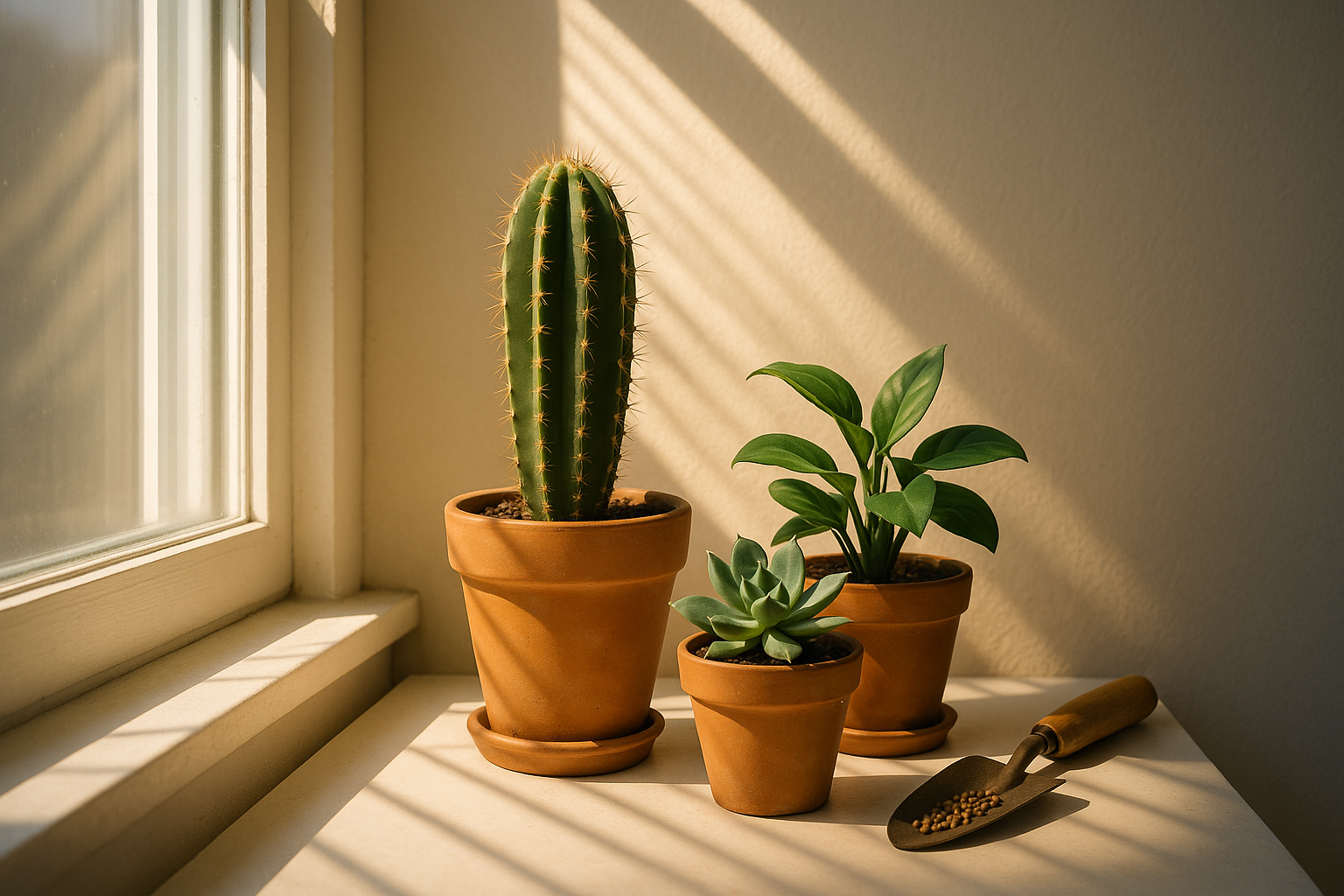Understanding Plant Lighting: A Complete Guide
Master the fundamentals of plant lighting, from natural light assessment to choosing the right grow lights for your indoor garden.

Light is the foundation of photosynthesis and arguably the most critical factor for plant health. Understanding light intensity, duration, and quality can mean the difference between thriving plants and struggling ones. This comprehensive guide will help you master your plants' lighting needs and create the perfect environment for indoor gardening success.
Understanding Light Intensity
Light intensity is measured in foot-candles (fc) or lux. Most smartphones have light meter apps that can give you approximate readings to help assess your space.
Quick Reference: Light Levels
- High Light: 1,000+ fc (direct sun 6+ hours)
- Bright Indirect: 500-1,000 fc
- Medium Light: 250-500 fc
- Low Light: 75-250 fc
Types of Natural Light
Direct Light (High Light)
Direct sunlight hits the plant for 6+ hours daily, typically in south-facing windows. Perfect for succulents, cacti, citrus trees, and many flowering plants like hibiscus and geraniums.
Placement: Within 2-3 feet of south-facing windows
Bright Indirect Light
Bright but filtered light, such as near east/west windows or slightly away from south windows. Ideal for most tropical houseplants like monstera, pothos, fiddle leaf figs, and rubber trees.
Placement: 3-5 feet from south windows, or directly in east/west windows
Medium Light
Moderate light levels, often in north-facing windows or several feet from brighter windows. Great for snake plants, ZZ plants, dracaenas, and many ferns.
Placement: North windows or 5-8 feet from bright windows
Low Light
Areas that receive minimal natural light but can still support some plant growth. Suitable for pothos, peace lilies, Chinese evergreens, and cast iron plants.
Placement: 8+ feet from windows or areas with only artificial room lighting
Assessing Your Home's Light Conditions
Understanding the light conditions in different areas of your home is crucial for plant placement success. Here's how to evaluate your space:
- Window Direction: South windows receive the most light, followed by east/west, then north
- Seasonal Changes: Light intensity varies significantly between summer and winter
- Obstructions: Trees, buildings, and overhangs can dramatically reduce available light
- Time Assessment: Observe light patterns throughout the day to understand duration and intensity
Pro Tip: The Shadow Test
Hold your hand 12 inches above a white surface. A sharp, dark shadow indicates high light; a soft shadow means medium light; barely visible shadow suggests low light.
Signs Your Plant Needs More or Less Light
Too Little Light
- Leggy, stretched growth (etiolation)
- Small, pale new leaves
- Slow or no growth
- Leaf drop, especially lower leaves
- Flowering plants won't bloom
- Variegated plants lose their patterns
Too Much Light
- Scorched or brown leaf tips/edges
- Faded or washed-out leaf colors
- Leaves curling or wilting despite adequate water
- Rapid soil drying
- Stunted growth in extreme cases
When to Use Grow Lights
Grow lights become essential when natural light is insufficient. Consider supplemental lighting if:
- Your home lacks adequate natural light (common in apartments or north-facing homes)
- You want to grow plants in windowless rooms or basements
- Winter months reduce daylight hours significantly
- You're growing seedlings or propagating plants
- You have high-light plants but only medium-light locations
Choosing the Right Grow Light
Modern grow lights have revolutionized indoor gardening. Here's what you need to know:
LED Grow Lights (Recommended)
Energy-efficient, long-lasting (50,000+ hours), and produce less heat. Full-spectrum LEDs provide the complete light spectrum plants need.
- Pros: Low energy use, minimal heat, customizable spectrums, long lifespan
- Cons: Higher upfront cost
- Best for: All plant types, especially long-term setups
Fluorescent Lights (T5/T8)
Good for seedlings, herbs, and low to medium light plants. More affordable upfront but less efficient long-term.
- Pros: Lower initial cost, even light distribution
- Cons: Higher energy use, shorter lifespan, need close placement
- Best for: Seedlings, herbs, leafy greens
Key Specifications to Look For
- PPFD (Photosynthetic Photon Flux Density): 100-300 μmol/m²/s for most houseplants
- Color Temperature: 5000K-6500K for vegetative growth, 2700K-3000K for flowering
- Coverage Area: Match light footprint to your plant area
- Timer Function: Essential for consistent photoperiods
Light Duration and Timing
Most houseplants need 12-16 hours of artificial light daily when grow lights are the primary source. Use timers to maintain consistent schedules:
- Foliage plants: 12-14 hours daily
- Flowering plants: 14-16 hours daily
- Seedlings: 14-16 hours daily
- Succulents: 12-14 hours daily
Common Lighting Mistakes to Avoid
- Placing lights too far away: Most grow lights should be 12-24 inches from plants
- Inconsistent lighting schedules: Plants thrive on routine; use timers
- Ignoring seasonal changes: Adjust artificial lighting as natural light changes
- One-size-fits-all approach: Different plants have different light requirements
- Forgetting about heat: Some lights generate heat that can stress plants
Final Thoughts
Remember that lighting is just one part of plant care. Proper watering, humidity, temperature, and nutrition work together with adequate lighting to keep your plants thriving. Start with understanding your current light conditions, then gradually adjust and supplement as needed.
